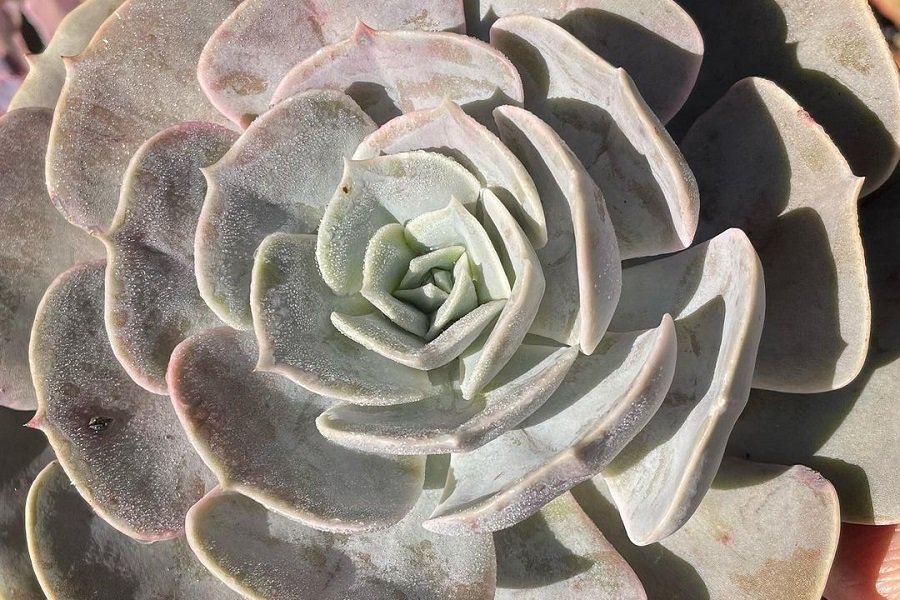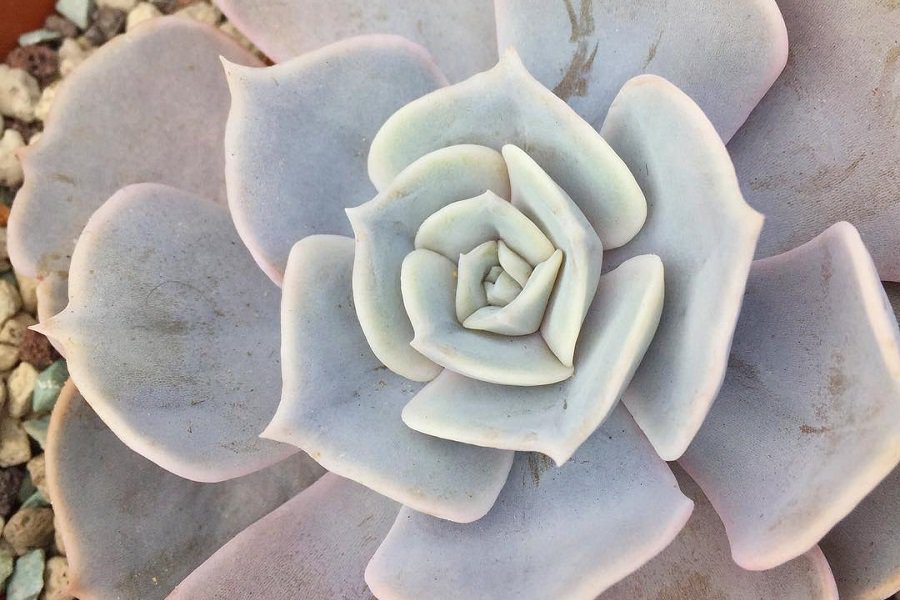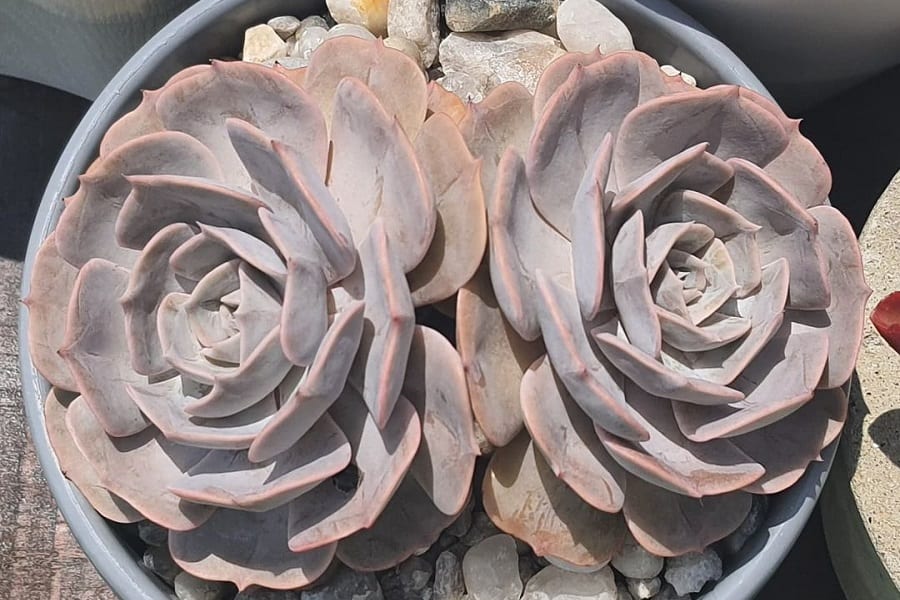Echeveria Pollux: Bringing a Touch of Pastel Perfection Indoors
Elevate your indoor space with the breathtaking Echeveria Pollux! This hybrid succulent captivates at first glance with its celestial rosettes awash in lilac, silver, and grey hues. As if the mesmerizing colors weren’t enough, dainty bell-shaped blooms emerge with pink outer petals surrounding a vibrant orange interior. Compact yet striking, Echeveria Pollux brings an undeniable wow-factor to any sunny windowsill or indoor garden. Let this low-maintenance beauty infuse your home with a touch of pastel perfection!

Contents
About Echeveria Pollux
The Echeveria Pollux is a hybrid succulent from the Crassulaceae family. While its exact parentage remains a mystery, there’s no denying the exquisite beauty of this succulent. Mature plants can reach up to 8 inches wide, forming a captivating rosette of fleshy leaves coated in a powdery, waxy bloom. This natural coating gives the leaves their dreamy pastel shades that simply beg to be admired up close.
Check this out:
160+ Amazing Echeveria Types with Pictures
Echeveria Pollux Care Guide
Light Requirements
To keep your Echeveria Pollux looking its vibrant best, provide ample bright, direct light for at least 4-5 hours daily. An unobstructed south or west-facing window works perfectly. During summer, you can even move your plant outdoors for added sun exposure. If indoors, consider using a grow light to supplement natural rays.
Grow lights are ideal for providing the intense yet diffused light succulents crave. Position the light around 6-12 inches from the plant and keep it on for 12-16 hours per day.
Watering Needs
Like most succulents, Echeveria Pollux is drought-tolerant and prefers infrequent watering. Only water when the soil is completely dry, providing a deep soak until water drains from the pot’s drainage holes. The best rule is to err on the side of underwatering, as this succulent is highly susceptible to rot from excessive moisture. In general, water every 2-3 weeks in spring and summer, reducing to monthly in winter.

Soil Mixture
Fast-draining soil is crucial for preventing issues like root rot. A classic cactus/succulent potting mix amended with materials like perlite or pumice works beautifully for Echeveria Pollux. You can also make your own well-draining mix by combining one part potting soil with one part coarse sand or perlite.
Fertilizing
While fertilizing isn’t a strict necessity, providing a gentle nutrient boost during Echeveria Pollux’s active growing phase can promote lush, colorful growth. Use a cactus fertilizer diluted to 1/4 strength and apply every 4-6 weeks from spring through summer.
Temperature & Humidity
Warm and dry conditions are ideal for this succulent beauty. Keep temperatures between 65-80°F during spring/summer, allowing it to dip slightly lower in winter. Maintain humidity around 40-50% to prevent issues like edema or rot. Mist the soil surface lightly if needed.
Pests & Problems
Thankfully, Echeveria Pollux is relatively pest and problem free when its care needs are met. Potential issues include mealybugs, rot from overwatering, or sunburn from excessive light exposure. Inspect regularly and act quickly to address anything amiss.
Pruning
As Echeveria Pollux matures, the main rosette may become a bit leggy or unsightly. At this stage, you can prune off the topmost few inches, allowing the plant to resprout new growth from the base. Prunings can also be used for propagation.
Potting and Repotting
Use a container with ample drainage holes and just slightly larger than the rootball to avoid waterlogged soil. Repot annually in early spring to refresh the soil before the growing season.
Echeveria Pollux Propagation Methods

One of the best ways to expand your collection of this exquisite succulent is through propagation. Echeveria Pollux can be easily propagated from leaves, stem cuttings, offsets, or seeds – allowing you to multiply your pastel beauties!
Leaf Propagation
- Choose a plump, healthy leaf and gently twist it from the stem. Allow it to callous for 2-3 days before propagating.
- Once calloused over, lay the leaf on top of a well-draining soil mix. Anchor it down gently and keep the soil lightly moist.
- In a few weeks, roots and a tiny rosette will start to form. Once established, the new plant can be transplanted.
Stem Cutting Propagation
- Using a clean, sharp knife or scissors, cut off a stem from the main plant just below a leaf node.
- Allow the cutting to callous over for 3-5 days before standing it upright in a well-draining soil mix.
- Within a month, roots will sprout and new growth will emerge from the leaf nodes.
Offset Division
- When mature, Echeveria Pollux will produce small offsets or pups around the base.
- Simply use a clean knife to gently detach these offsets from the main plant.
- Allow the offsets to dry for 2-3 days before replanting them in fresh soil.
Seed Propagation
- Collect seeds when the plant’s flower dries on the stem after blooming.
- Sow the seeds shallowly in a seed-starting tray filled with well-draining cactus/succulent mix.
- Cover the tray with plastic to maintain humidity and place it in a warm, bright location.
- Once sprouted, very gently introduce air circulation by venting the plastic cover.
- When the seedlings are a few inches tall, they can be transplanted carefully into individual pots.
No matter which propagation method you choose, be sure to use a well-draining soil mix. With a little time and patience, you’ll be able to multiply your collection of this irresistible pastel succulent!
